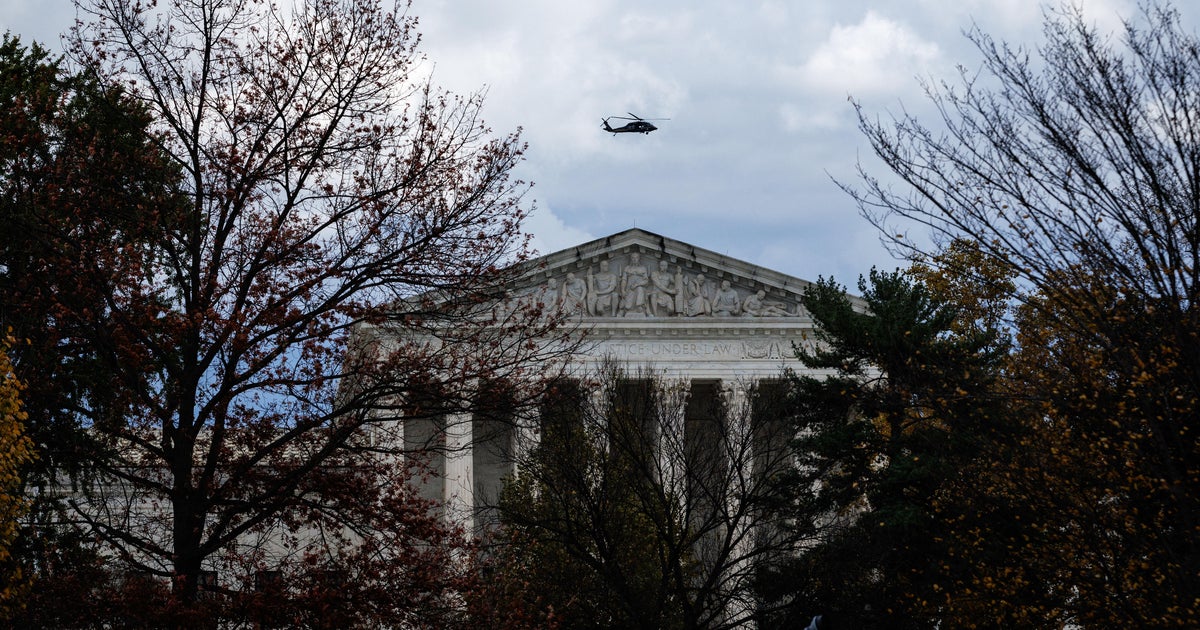Biden Showcases Deficit Progress In Bid To Counter Critics

WASHINGTON (AP) — President Joe Biden on Wednesday highlighted new figures showing the government’s red ink will grow less than expected this year and the national debt will shrink this quarter as he tried to counter criticism of his economic leadership amid growing dismay over inflation going into midterm elections that will decide control of Congress.
Biden, embracing deficit reduction as a way to fight inflation, stressed that the dip in the national debt would be the first in six years, an achievement that eluded former President Donald Trump despite his promises to improve the federal balance sheet.
“The bottom line is the deficit went up every year under my predecessor before the pandemic and during the pandemic. It has gone down both years since I’ve been here,” Biden said. “Why is it important? Because bringing down the deficit is one way to ease inflationary pressures.”
The president is placing a renewed emphasis on reducing the deficit — which is the gap between what the nation spends and what it takes in — in order to blunt Republican criticism that the $1.9 trillion coronavirus relief package has left the U.S. economy worse off. It’s an attempt to burnish his credentials as a responsible steward of the economy while trying to fend off criticism about inflation at a 40-year high. The reopening of the economy coming out of the coronavirus pandemic and the commodity squeeze resulting from the Russia-Ukraine war has made high prices a key political risk for Democrats.
But it is unclear if greater fiscal responsibility can deliver politically for Biden as Democrats try to defend their control of the House and Senate. His two most recent Democratic predecessors, Bill Clinton and Barack Obama, also cut budget deficits, only to leave office and see their Republican successors use the savings on tax cuts.
When reporters tried to question Biden about other topics after his remarks, the president prodded, “You don’t want to ask about deficits?”
Bidden is making a nuanced argument about how the financial outlook has improved: Strong job gains over the past 16 months have increased total incomes and led to additional tax revenues. That means that this fiscal year’s budget deficit will decline $1.5 trillion, much better than the $1.3 trillion that was initially forecast. Less government borrowing will, in turn, limit the financial sources of inflation.
But the expected $26 billion drop this quarter in the national debt — which is money the U.S. owes due to accumulated deficits over time — will be short-lived, as the debt already totals $23.9 trillion and will continue to rise in the second half of this year. And while Biden expects his plans will improve the outlook for budget deficits over the next decade, the national debt would continue to climb. The Biden administration believes that the cost of servicing the debt is low enough to sustain the borrowing, while critics say structural changes are needed to improve the long-term outlook.
“There needs to be a real fiscal restructuring because we continue to see these trillion-dollar deficits as far as the eye can see,” said Douglas Holtz-Eakin, a former director of the Congressional Budget Office who now leads the center-right American Action Forum.
Holtz-Eakin said the Biden administration is taking credit for lower deficits over the past two years that largely occurred due to the end of coronavirus-related spending, rather than fixing the finances of Medicare and Social Security that will determine the long-term budget outlook.
“That doesn’t seem to be the right aspiration for a great country,” Holtz-Eakin said. “What they’re doing is essentially deferring the need to do anything real and genuinely fix the programs that are important to people.”
Deficit reduction also matches a priority of Sen. Joe Manchin of West Virginia, the key Democratic vote in the evenly split Senate who blocked the passage of Biden’s domestic and environmental agenda in December. The reduction also occurs amid rising interest rates on U.S. Treasury notes, a consequence of inflation running at 8.5% and the Federal Reserve’s efforts to reduce price pressures.
Within an hour of Biden’s remarks, Senate Republicans gathered to challenge Biden’s economic policies. Their core critique is that overspending in response to COVID-19 was paired with restrictions on domestic oil and natural gas production, leading to higher gasoline prices than under Trump.
’The biggest drag on the U.S. economy right now involves the rising energy costs,” said Sen. Dan Sullivan, R-Alaska. “This is purely a self-inflicted wound by the Biden administration.”
One of the challenges for Biden is that voters have largely shrugged off deficit increases and seldom rewarded deficit cuts. Voters might discuss the idea of reducing deficits with pollsters, yet health care, incomes and inflation are often top of mind when casting their ballots.
Norman Ornstein, an emeritus scholar at the conservative American Enterprise Institute, noted that deficits are often “abstract” for voters. The recent low interest rates have also muted any potential economic drags from higher deficits, which have risen following the COVID-19 pandemic and, separately, the 2008 financial crisis, to help the economy recover.
“They’re more likely to respond to things that are in their wheelhouse or that they believe will have a more direct effect on their lives,” Ornstein said. Deficits are “a step removed for most voters, and we’ve been through periods where we’ve had the big deficits and debt and it’s not like it devastated directly people’s lives.”
Checkout latest world news below links :
World News || Latest News || U.S. News
Source link



